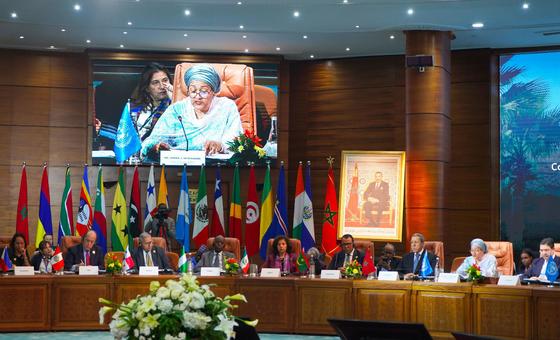Speaking at a conference on addressing development challenges of middle-income countries (MICs), in Rabat, Morocco, Amina Mohammed said recent crises have laid bare inequalities and exposed stark contrasts.
“While developed countries have been able to protect and swiftly support their populations, other countries have been left dependent on the international community and the existing global support systems.”
She said existing frameworks fall short in meeting the complex needs of developing nations.
“The obstacles that persist speak loud and clearly to the challenges middle-income countries face and the opportunities lost for growth, stability, and sustainable development,” she said.
A large and diverse group
MICs are a large and diverse group of over 100 countries. According to the World Bank their per capita incomes vary from $1,000 to $12,000.
Perhaps counter-intuitively due to the different classification metrics in use, the list includes 20 least developed countries (LDCs), 19 landlocked developing countries (LLDCs), and 29 small island developing States (SIDS).
As a group, they account for nearly one-third of global gross domestic product (GDP) and serve as major engines of growth. They are home to around three quarters of the world’s population.
However, their vulnerabilities persist regardless of income level, with 62 per cent of the world’s poor residing in MICs.
‘Second generation’ of solutions
Highlighting the diversity and challenges of these nations, Ms. Mohammed stressed the need for a “second generation” of solutions.
“In an uncertain world with multiple and cascading global crises, flexibility, innovation, creativity, and global solidarity are needed to secure a sustainable future, not just for the few, but for the global community as a whole, especially for women and children,” she said.
She noted that recovery is lagging in the aftermath of the COVID-19 pandemic and MICs are suffering disproportionately from climate emergencies, conflicts and disasters, reversing years of development gains.
Potential for opportunities
Despite the hurdles, the Deputy Secretary-General cited the potential for opportunities, provided there is “courage, vision, and solidarity to seize them”.
She called for a substantial increase in development finance, recalling the UN Secretary-General’s SDG Stimulus plan calling for at least $500 billion annually for long-term development.
Secondly, she advocated for the reform of the international financial architecture, calling for changes that reflect the true economic weight and voices of middle-income countries.
Finally, she urged the adoption of measures of progress beyond GDP to better address the multidimensional nature of sustainable development.
Invest in hope and future
In conclusion, Ms. Mohammed urged world leaders to unite and invest in hope, sustainable development, and a better future for all.
“The achievement of our Sustainable Development Goals (SDGs) hinges, above all, on your progress and prosperity,” she said.
The two-day conference was organized jointly by the Government of Morocco and the UN Economic Commission for Africa, under the theme “Solutions to Address Development Challenges of Middle-Income Countries in a Changing World”.
Discussions focused on key themes for MICs, including South-South and triangular cooperation, climate and innovative financing, and the so called “middle-income trap” – an economic development situation in which a country that attains a certain income gets stuck at that level.

